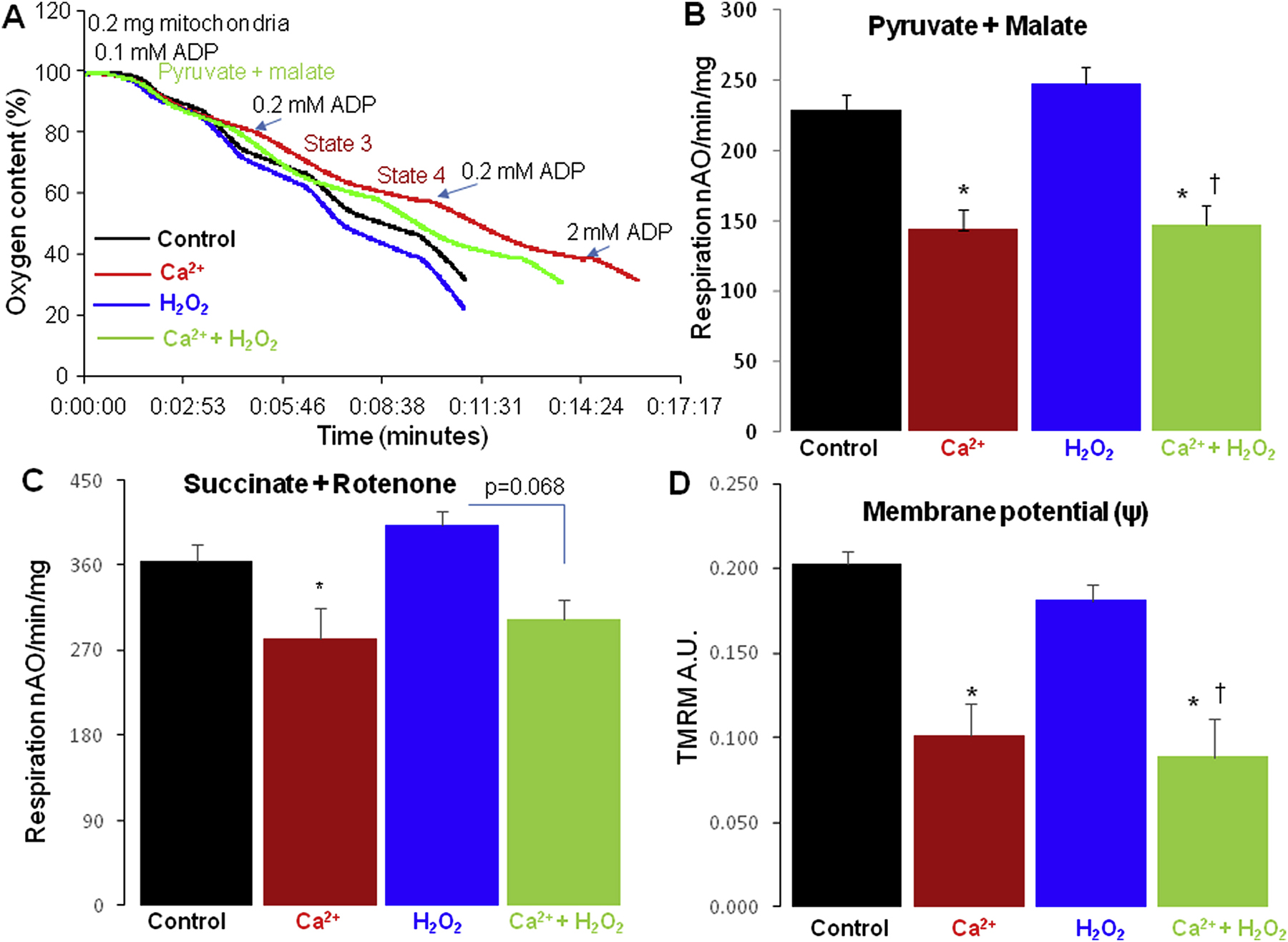Figure. 2:

Oxidative phosphorylation in the isolated heart mitochondria.
Panel A: A representative original tracing of the oxygen consumption in isolated cardiac mitochondria is shown. Mitochondria were first added into the oxygen chamber and 0.1 mM ADP added to consume residual endogenous substrates. Then pyruvate + malate was added into the chamber followed with 0.2 mM ADP to stimulate state 3 respiration. After consumption of ADP, respiration slowed, demonstrating preserved respiratory control, leading to ADP-limited state 4 respiration. Then, 0.2 mM ADP was repeated to recheck the state 3 respiration. A saturating concentration of ADP (2mM) was finally used to stimulate maximal respiration.
Panel B: Compared to vehicle, calcium and calcium+H2O2, rather than H2O2 alone, led to the decreased maximal respiration when pyruvate + malate were used as complex I substrates.
Panel C: Compared to vehicle, calcium slightly decreased oxidative phosphorylation using succinate (plus rotenone) as a complex II substrate. H2O2 alone did not alter succinate oxidation. Calcium+H2O2 tended to decrease the maximal respiration when succinate (plus rotenone) was used as the complex II substrate.
Panel D: Compared to vehicle, calcium and calcium+H2O2, rather than H2O2 alone, led to a partially depolarized inner membrane potential (ΔΨ) when pyruvate+malate were used as complex I substrate.
Mean ± SEM. *p<0.05 vs. vehicle; † p<0.05 vs. vehicle; H2O2 treatment. Vehicle (n=9), Calcium (n=7), H2O2 (n=7), Calcium + H2O2 (n=3).
